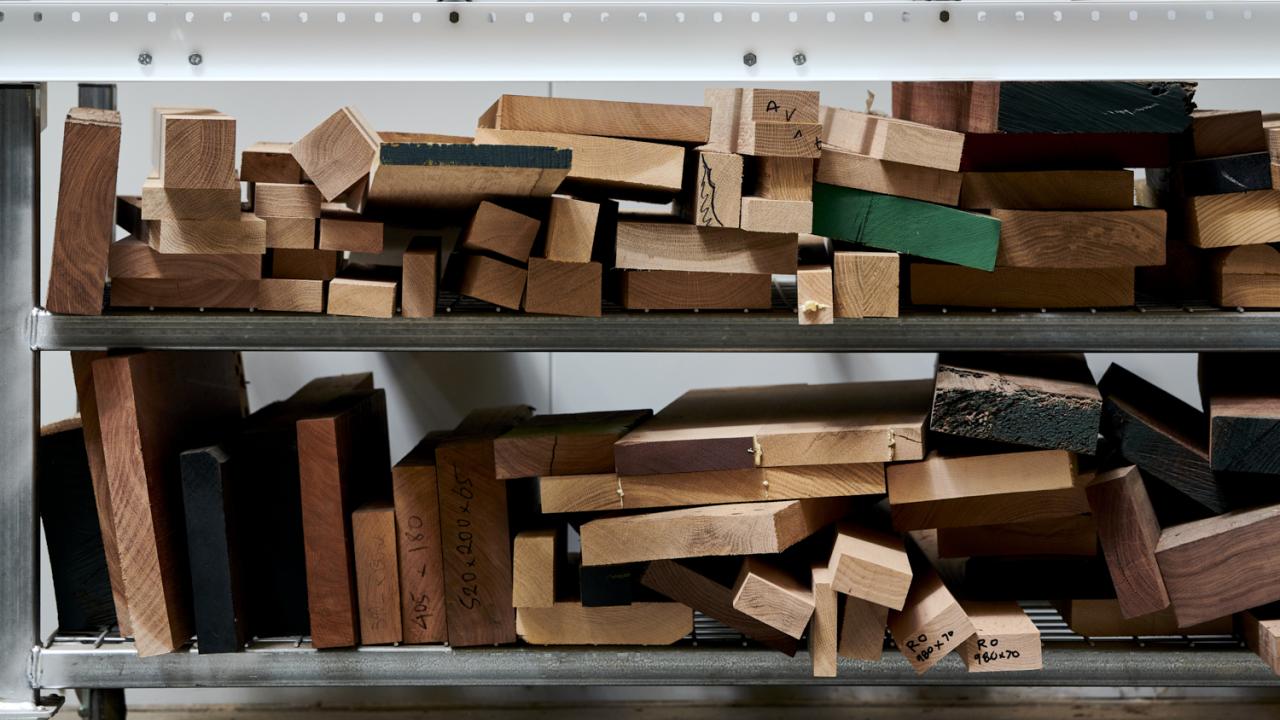The entire lifecyle of the Kurunpa Kunpu collection from the US forest to the finished collection on display in Freemantle and Melbourne is in the process of being analysed.
Preliminary data has shown the replacement rates and carbon sequestration figures for each piece.
What are replacement rates?: Such is the volume of hardwood trees in the US forest, we are able to calculate the time it would take for the same volume of timber used in the designs to grow back. This usually amounts to a matter of seconds. The replacement rate is calculated from total U.S. annual increment of the specified hardwood species derived from the U.S. Forest Service Inventory and Analysis (FIA) program and assumes that 2 m³ of logs is harvested to produce 1 m³ of lumber (i.e. 50% conversion efficiency).
What is carbon sequestration?: During growth trees absorb CO2 from the atmosphere. Once trees are harvested and processed to produce sawn lumber (or any other wood product) they continue to store this CO2. This act of storing CO2 is referred to as sequestration and is expressed as CO2 equivalent that is kept out of the atmosphere.
Manta Pilti | Dry Sand Cabinet in American hard maple
0.6 seconds replacement
| 37.2 Kg CO2e
Manta Pilti | Dry Sand Credenza in American walnut
2.1 seconds replacement
| 34.2 Kg CO2e
Kutitji | Shield Chair in American walnut
3.2 seconds replacement |
58.1 Kg CO2e
Kutitji | Shield Chair in American cherry
1.5 seconds replacement
| 53.6 Kg CO2e
Manta Pilti / Dry Sand chair in American walnut
1.8 seconds replacement
| 31.1 Kg CO2e
Manta Pilti / Dry Sand chair in American cherry
0.9 seconds replacement
| 28.6 Kg CO2e
Manta Pilti / Dry Sand chair in American hard maple
0.5 seconds replacement
| 36.0 Kg CO2e


